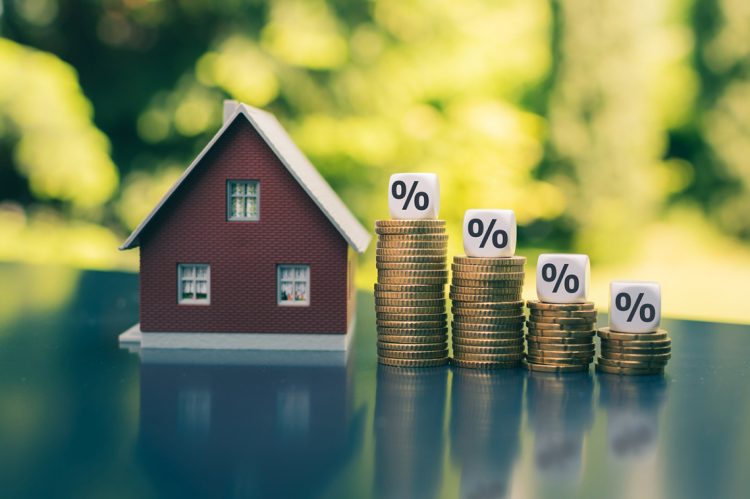The average 30-year fixed-rate mortgage (FRM) edged down slightly this week to 6.95%, a drop from the previous week’s historic jump over 7%, according to the latest Primary Mortgage Market Survey® (PMMS®) from Freddie Mac.
“Mortgage rates continue to hover around 7%, as the dynamics of a once-hot housing market have faded considerably,” said Sam Khater, Freddie Mac’s chief economist. “Unsure buyers navigating an unpredictable landscape keeps demand declining while other potential buyers remain sidelined from an affordability standpoint. Wednesday’s interest rate hike by the Federal Reserve will certainly inject additional lead into the heels of the housing market.”
The latest:
- 30-year fixed-rate mortgage averaged 6.95% with an average 0.8 point as of November 3, 2022, down from last week when it averaged 7.08%. A year ago at this time, the 30-year FRM averaged 3.09%.
- 15-year fixed-rate mortgage averaged 6.29% with an average 1.2 point, down from last week when it averaged 6.36%. A year ago at this time, the 15-year FRM averaged 2.35%.
- 5-year Treasury-indexed hybrid adjustable-rate mortgage (ARM) averaged 5.95% with an average 0.2 point, down from last week when it averaged 5.96%. A year ago at this time, the 5-year ARM averaged 2.54%.
More industry analysis:
Bright MLS Chief Economist Dr. Lisa Sturtevant commented:
“Mortgage rates dipped just below 7% this week, even as the Federal Reserve hiked the target federal funds rate to between 3.75 and 4%. The average rate on a 30-year fixed rate mortgage was 6.95% last week, while the average rate on a 5/1 ARM was 5.95%.
Despite the modest decline, rates are still more than double what they were a year ago. While rates could be volatile over the coming weeks, home buyers expecting mortgage rates to fall significantly will be disappointed. The question is rather—will rates stabilize or will they push even higher?
There are two basic scenarios in the short-term. First, if inflation remains stubbornly high, the Federal Reserve will continue to aggressively raise rates. October inflation data will be released next week and there are some labor market indications to suggest inflation will remain elevated.
Under this scenario of persistently higher inflation, mortgage rates could climb to 8% or beyond in late 2022 and into the first part of 2023.
Alternatively, we could learn that inflation eased in October, which would be a sign that the Fed’s rate-hike tactics have begun to work. The Fed could then pull back on its rate escalation, meaning mortgage rates could stabilize, though probably still remaining around 7%, on average, through the first part of 2023.
In either case, however, housing market activity will cool further as we head into winter, as both buyers and sellers are holding back. In the Mid-Atlantic, for example, closed sales have fallen faster than at any time since spring of 2020 when COVID-19 locked down the economy. At the same time, the number of new listings coming on to the market has dropped to a level not seen since January.
Home prices will fall from their peaks, but the fact that there is contraction on both the demand and supply side of the equation means that price drops will not be severe. It is a very different market than we had in 2008 when demand dried up and inventory surged as foreclosures, short sales, and new construction flooded the market.”
Realtor.com® manager of economic research, George Ratiu, commented:
“The Freddie Mac fixed rate for a 30-year loan notched a slight retreat this week, sliding to 6.95%. Investors digested another 75-basis point hike in the Federal Reserve’s policy rate, which had been anticipated leading up to yesterday’s FOMC meeting. While the rate retreated below 7%, markets pushed the 10-year Treasury to 4.17% in early trading, hinting at expectations of continued inflationary pressures.
After the meeting, Jerome Powell indicated that the Fed plans to evaluate the impact of this year’s aggressive monetary tightening on economic indicators and inflation, with the possibility of scaling back the rate increases. However, he made it clear that any slowdown in monetary policy is premature, and that rates are likely to end up much higher than initially expected. Both 2-year and 10-year Treasury yields rose higher in the wake of the announcement, pushing the yield curve even deeper into negative territory, a sign that capital markets see a rising probability of recession in 2023.
With inflation still running at a 40-year high and the Fed expecting a few more rate increases to combat it, mortgage rates will experience upward pressure through the end of 2022. With mortgage rates almost 400 basis points higher than last year, today’s buyer of a median-priced home is looking at a monthly mortgage payment that is $965 higher. The dramatic jump in financing costs has effectively shrunk most buyers’ budgets.
For homebuyers, housing markets are facing uncertainty in this transition period, as affordability issues put buying significantly out of reach for many. Based on September 2021’s median home price and 30-year fixed rate, and assuming a 20% down payment, a typical homebuyer would have been looking at a $1,296 monthly payment. This year, due to both higher prices and interest rates, a typical buyer is facing a $2,261 monthly payment. In order for this year’s buyer to have the same monthly payment as last year, given a 7% interest rate, the median home price would have to decline by 45%, to about $235,000.
Most homes are priced based on comparable properties which sold in the past six months, a period which does not capture today’s much-higher rates and buyers’ inability to afford them. These listing prices also reflect a market in which available supply remains low. With household incomes lagging inflation and borrowing costs still rising, we can expect transactions to continue declining, and prices to continue to fall.”












